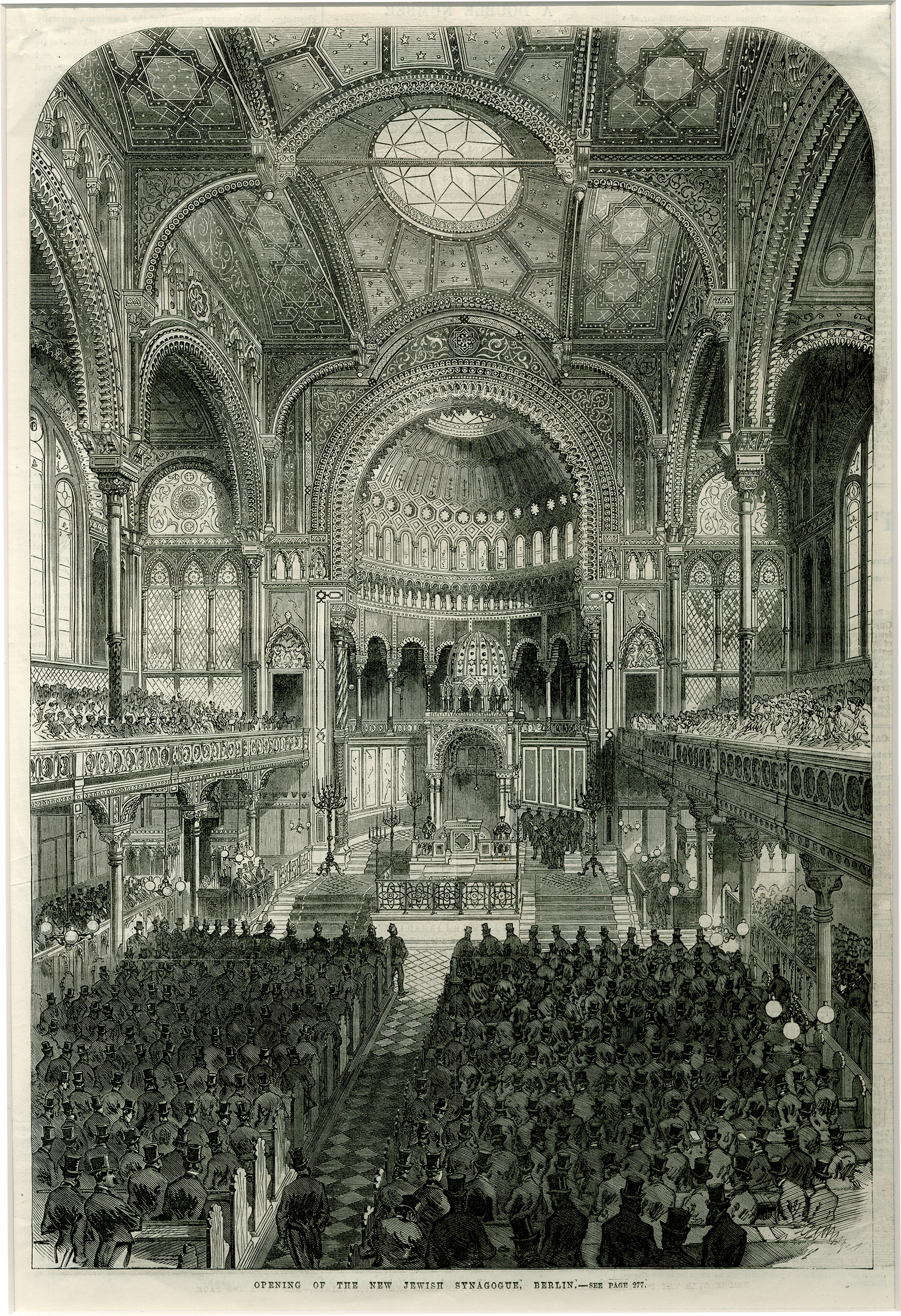When inaugurated in 1866, the Neue Synagoge on the Oranienburgerstrasse in Berlin was the biggest, costliest, and easily the most conspicuous synagogue in Europe, if not the world. It was also the most spectacular example of neo-Moorish synagogue architecture. The exterior was a mixture of Islamic and Romanesque elements that deployed yellow masonry through which ran horizontal stripes of red brick. The height of the façade was 92 feet while the depth of the synagogue was 308 feet. The central entrance was flanked by two giant towers, the one on the right housing the Jewish community administration, and a library with 67,000 volumes while he tower on the left served as a Jewish museum. On the exterior, the synagogue's showpiece was the onion dome that soared majestically some 160 feet into the air. Wrapped in a blanket of zinc and swaddled in gold ribbing, crowned with a Star of David, the great dome was the brightest and most joyful architectural feature to be found anywhere in Berlin.
With seating for 3,200 worshippers, the triple nave interior was a massive 188 feet long, 126 feet wide and soared to a height of 87 feet. The entire interior was a dazzling kaleidoscope of color, light, and texture. With Moorish decorative patterns from the thirteenth and fourteenth centuries, the floors were inlaid with intricate mosaics, the walls were covered in richly colored stucco and then painted with stars and flora, while stalactite features hung from the ceiling and geometric and honeycomb patterns were widely deployed, including on the elaborate friezes that accented the temple's interior. A technical breakthrough helped bathe the entire synagogue in a palette of many colors. The windows were double paned, with the outer windows made of clear glass and the inner windows of stained glass. An innovative system of gas lamps was installed in between the two panes throughout the synagogue, creating what one attendee at the synagogue's dedication ceremony in 1866, said was a "magical effect."
The Neue Synagoge was an immediate sensation. A contemporary newspaper account vividly described the synagogue as "a fairytale structure . . . . In the middle of a plain part of the city we are led into the fantastic wonder of the Alhambra, with graceful columns, sweeping arches, richly-colored Arabesques, abundant wood carvings, all with the thousandfold magic of the Moorish style." On Friday, July 19, 1867, Lewis Carroll, author of Alice in Wonderland, visited the Neue Synagoge and recorded that "the building itself is most gorgeous, almost the whole interior surface being gilt or otherwise decorated." Of the service itself, Carroll observed that "what was read was all in German, but there was a great deal chanted in Hebrew, to beautiful music: some of the chants have come down from very early times, perhaps as far back as David."

